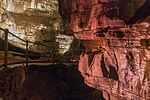Punch Kill
New York (state) river stubsRivers of New York (state)Rivers of Schoharie County, New York
Punch Kill starts south of East Cobleskill, New York and flows into the Cobleskill Creek in Howes Cave, New York.
Excerpt from the Wikipedia article Punch Kill (License: CC BY-SA 3.0, Authors).Punch Kill
NY 7,
Geographical coordinates (GPS) Address Nearby Places Show on map
Geographical coordinates (GPS)
| Latitude | Longitude |
|---|---|
| N 42.685833333333 ° | E -74.378888888889 ° |
Address
NY 7 3063
12092
New York, United States
Open on Google Maps





